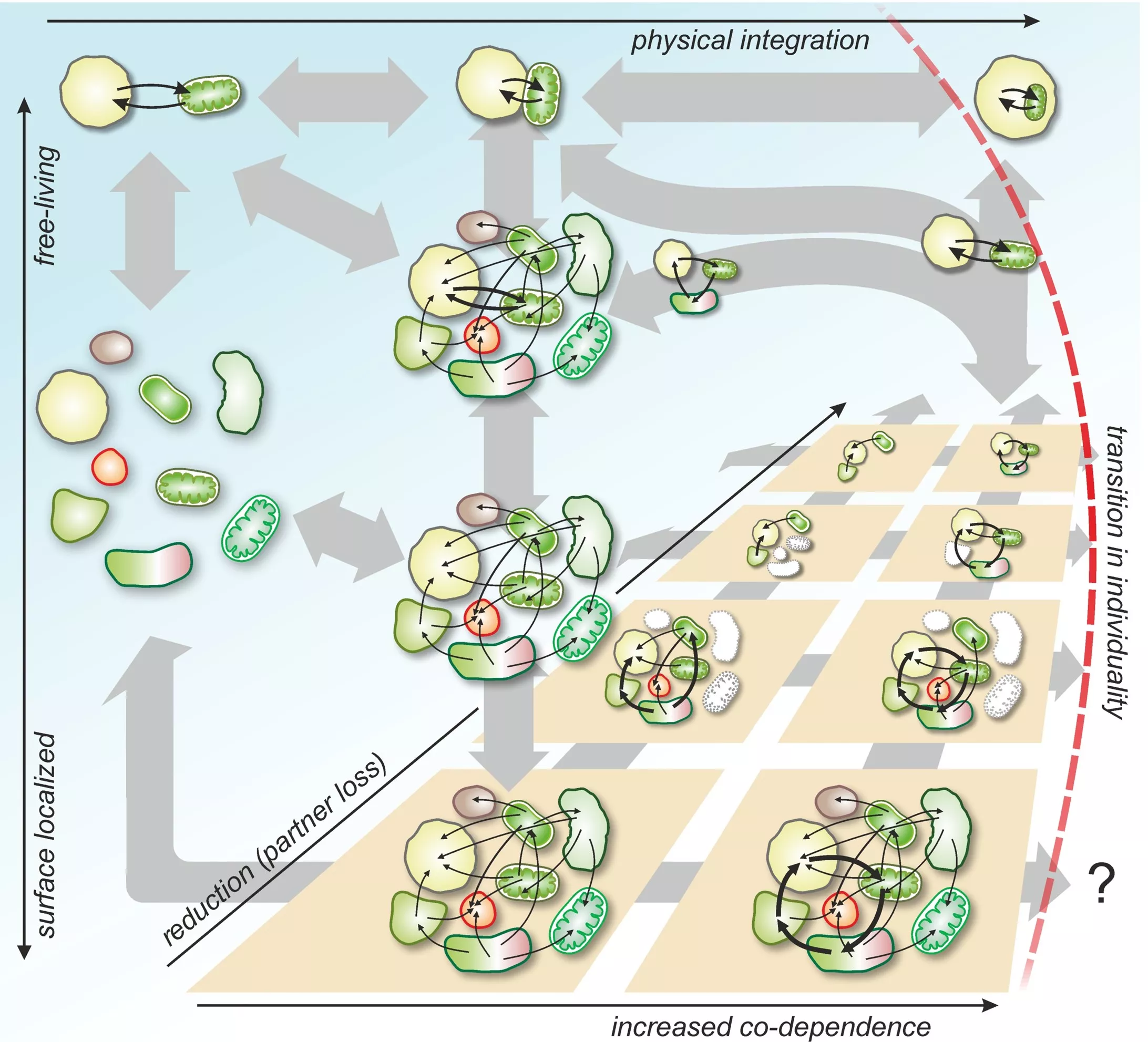István Zachar and Gergely Boza from the ELKH Centre for Ecological Research (CER) investigated the role of cell-cell cooperation in the development of higher levels of organization in microbial communities. The research has identified the selection forces that promote or inhibit the establishment of microbial communities, reproduction and the possible development of higher levels of organization. The paper summarizing the results was published in the prestigious international journal Frontiers in Ecology and Evolution.
Microbial communities are made up of single-cell organisms, most commonly bacteria and archaea. Examples include biofilms that form on the stones of riverbeds, on the roots of plants, on the skin of animals and humans, or on the inner surface of an alimentary canal. These communities are usually very diverse, but interactions are mostly limited to the immediate vicinity of the cells.
Among microbial communities, one of the most common interactions is metabolic cooperation, whereby cells release various metabolites into their environment, which then freely travel over small distances, for example to a neighbouring cell. These molecules – which may be simple food molecules, antibiotics, enzymes or signal molecules – not only provide food for the neighbour, but often also mediate more complex, higher-order interactions between cells, ultimately stimulating or inhibiting the partner’s reproduction.

In the microbial world, interactions based on mutual assistance and cooperation – for example, syntrophic metabolism – are widespread and crucial for the formation, functioning and maintenance of these communities. At the same time, products that are released into the environment and diffuse freely are usually costly or only reach the recipient from the donor at a loss, due to natural degradation and resource contamination, among other things.
The most efficient form of metabolic cooperation is symbiosis between individuals of different species, and in particular endosymbiosis, where one cell moves inside another. Although this would be an obvious way of stabilizing the mutually beneficial relationships that are so common between microbes, only one such case has become known so far. The mitochondria, one of the most important advances of eukaryotic organisms, also became a cellular organelle by endosymbiosis when a bacterium moved into the host of another archaea about 2 billion years ago. According to some theories, this highly successful relationship also originated from the mutually beneficial metabolic syntrophy between bacteria and archaea. However, there is no known close syntrophic relationship at all between living uninucleate unicellular organisms (prokaryotes) that could come close to endosymbiosis. The emergence of eukaryotes from prokaryotic ancestors was a major evolutionary transition, during which cells lost their autonomy and created a new evolutionary unit responsible for the macroscopic biota around us. Although syntrophy is extremely widespread in the simple unicellular world, we do not know of any demonstrable case where evolution has led to a higher organization, i.e. to a major transition in such syntrophic communities. Why can’t prokaryotes ‘level up’ more often, why don’t we see more of these huge transitions?
In their studies, CER researchers have categorized selection forces according to which ones help or hinder the establishment, reproduction and possible higher organization of microbial communities. They evaluated community traits – species composition, coupled metabolism, metabolic functions, community building and interaction patterns – that not only can be stably maintained in such a community, but also reappear when new communities are formed and pass on minor changes (i.e. inherit information). If bacterial colonies have this adaptive property, they can persist stably in the population, for example in new colonies that are created from colony-forming organisms. If this trait provides a selective advantage to the colony, it can be maintained through higher levels of group selection. This would be the first step towards a major bacterial transition. However, due to the high variability of bacterial communities (and their structure), this is unlikely to happen, and there are no convincing examples yet.
An alternative solution, according to the researchers, is when a loose interaction network leads to close paired symbiosis through higher levels of selection. A textbook example of this is endosymbiosis, the movement of a cell into another cell, which is common in eukaryotes but unknown in the prokaryotic world except for the origin of the mitochondrion. Prokaryotes seem to have been given the opportunity to move to a higher level of organization for once. This fruitful relationship has also led us to be able to read these lines.

Publication:
I Zachar and G Boza (2022). The Evolution of Microbial Facilitation: Sociogenesis, Symbiogenesis, and Transition in Individuality. Front. Ecol. Evol. 10:798045. doi: 10.3389/fevo.2022.798045